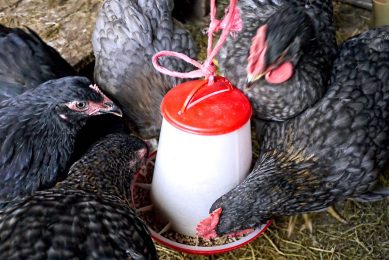Public is confused about antibiotic resistance

A new multi-country survey shows people are confused about this major threat to public health and do not understand how to prevent it from growing. The majority also thinks that agriculture should use fewer antibiotics.
This is concluded from a survey, done by the World Health Organisation (WHO). November 18 is marked as European Antibiotics Awareness Day.
Antibiotic resistance happens when bacteria change and become resistant to the antibiotics used to treat the infections they cause. Over-use and misuse of antibiotics increase the development of resistant bacteria, and this survey points out some of the practices, gaps in understanding and misconceptions which contribute to this phenomenon.
Also read: Antimicrobial resistance and poultry health
Antibiotics and viruses
Almost two thirds (64%) of some 10,000 people who were surveyed across 12 countries say they know antibiotic resistance is an issue that could affect them and their families, but how it affects them and what they can do to address it are not well understood. For example, 64% of respondents believe antibiotics can be used to treat colds and flu, despite the fact that antibiotics have no impact on viruses. Close to one third (32%) of people surveyed believe they should stop taking antibiotics when they feel better, rather than completing the prescribed course of treatment.
Link with food producing animals
Another key finding of the survey was that the majority of respondents say farmers should give fewer antibiotics to food-producing animals. More than 60% of respondents in all countries surveyed agree that this action could help address the problem. The multi-country average was 73%, with respondents in China, the Russian Federation and Serbia most likely to agree that this action has a part to play, at 83%, 81% and 81% respectively. Respondents in Indonesia are least likely to agree, at 64%, and the highest proportion of respondents disagreeing with this statement was in Vietnam at 16%.
Learn more and join the All About Feed/ World Poultry webinar: How to overcome BCO lameness without antibiotics on the 18th of November. Don’t miss out, and sign up here.
New veterinary strategy from EMA
At the same time, the European Medicines Agency (EMA) released today that its veterinary committee sets new objectives to limit risks arising from use of antimicrobials in animals. EMA therefore released a public consultation a new strategy on antimicrobials for 2016-2020 adopted by its Committee for Veterinary Medicinal Products (CVMP). The strategy, recognising that antimicrobial resistance is a global problem affecting both animal and human health, sets clear objectives based on a ‘One Health’ approach to help combat the threat of resistance which may arise from the use of antimicrobials in animals. The draft strategy is released for a 3-month public consultation.
Join 26,000+ subscribers
Subscribe to our newsletter to stay updated about all the need-to-know content in the feed sector, three times a week. Beheer
Beheer









 WP Admin
WP Admin  Bewerk bericht
Bewerk bericht